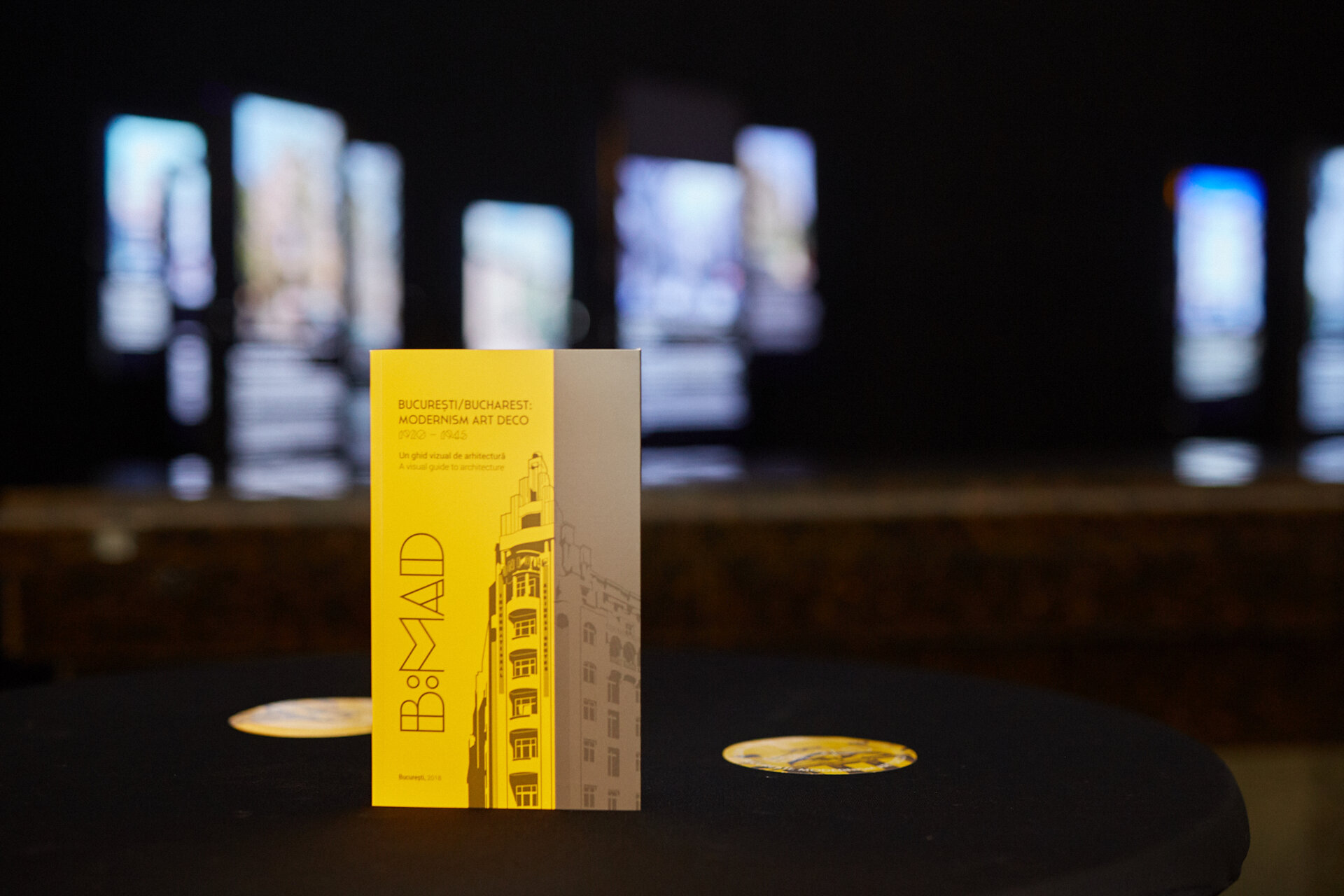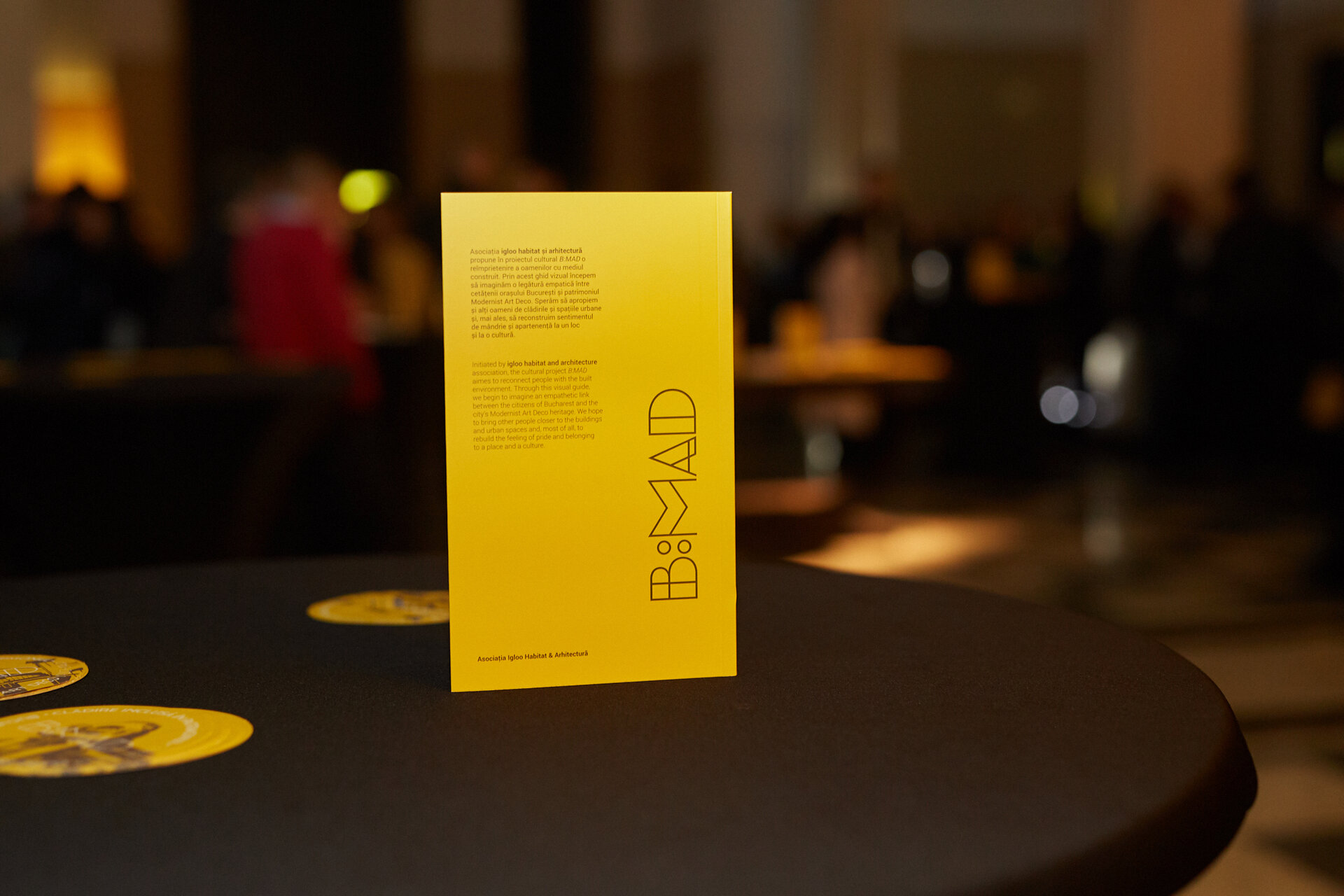
- Nomination for the “Research through Architecture / Architecture Books” section
Bucharest Modernism Art Deco – a visual guide to architecture
Authors’ Comment
Bucharest: Modernism Art Deco_1920 – 1945
A visual guide to architecture
Foreword
The guide proposes the popularization and impulses awareness, at national and international level, of the value of the deco-modernist architectural heritage - representative state of the architectural modernism in the city of Bucharest, such to protect, promote conservation and capitalization of this cultural heritage, a major identity landmark of Romanian capital.
Why Art Deco?
Because the Art Deco spirit “teaches us, from the perspective of postmodernity, to we appreciate the nuances, semitones and details that give life color and picturesqueness; we accept our human need for ornament, playfulness and superfluity; we regain the joy of living. ”
Why Bucharest?
Because in the interwar period, a particularly fast time in development
architectural-urban and cultural of the capital of Romania “the aesthetic deco enjoys here a extremely favorable reception, explainable by the traditional francophile orientation of
of modern Romanian culture and society. ”
Bucharest has a rich Modernist Art Deco heritage, due to a generation of architects of international level and who can be found in historical areas of the capital Romania, such as the modern boulevards Dacia, Magheru or Carol I and ensembles or residential areas.
The project, through the documentary photographic collection presented, is a open invitation to visit, explore, index, photograph and popularize the current stage of deco-modernist architecture from the interwar period.
The goal is to create over time a public visual archive illustrating buildings, elements decorative, architectural or constructive and interiors visitable from Bucharest. Archive will be accessible to both the general public and specialists - architects, designers, planners, historians etc. or to those responsible in the field, for conservation / renovation / restoration / rehabilitation or for possible classification / listing as historical monuments a some of these buildings.
As a result, Bucharest could become a favorite destination for the medium term exploring the diversity of the architectural-urban heritage of Art Deco modernism - along with cities like Paris, Brussels, London, New York or Miami.
Who is this guide for?
Although it does not have a direct addressability to architecture photography enthusiasts, they are included in the public to which this guide is addressed precisely through the opportunity to offering them a new perspective, that of a passer-by / visitor / urban explorer through deco-modernist Bucharest, who with the eye of a graphic designer discovered diversity architectural of this historical style.
Mainly the addressability of the guide is to tourists passionate about diversity. Especially in the context of the Romanian capital, foreign visitors but also urban exporters, art students and architecture that are open to rediscovering the value of a culture architectural features of a generation of European-level architects who shaped Bucharest
in the interwar period.
Photo archive
The photos are taken from the perspective of the viewer passing by the building, no from an idealized perspective of architectural photography from which the passer-by will not you can almost never see it because of the trees, the cars parked on the sidewalks, the traffic, and the simple fact that you sometimes notice a building looking up at it.
Related projects:
- Horia Creangă. A monography
- Bucharest Modernism Art Deco – a visual guide to architecture
- A Suitable Model for the Romanian Lifestyle: Garden Cities in Bucharest (1908-1948)
- Designing The Profile of The Future Architect
- Space and time visualisation
- Houses with Emotions
- The Romanian Dwelling. A Folder
- EMA OMA
- Sit?





